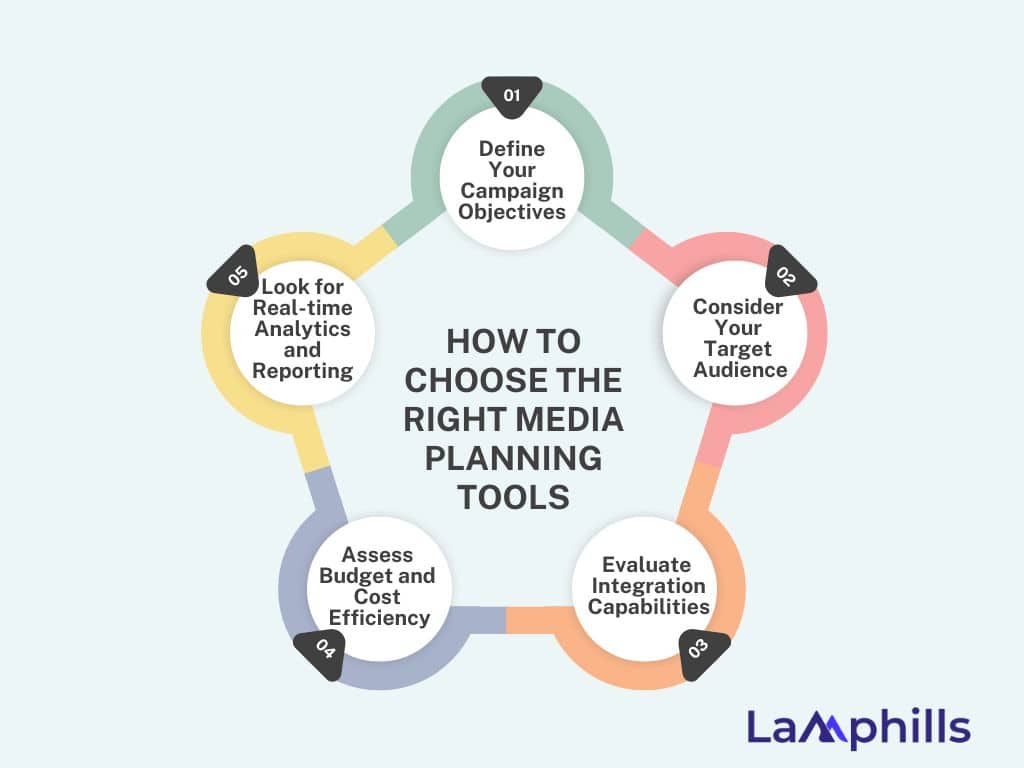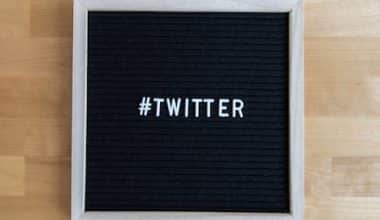Media planning can feel like trying to solve a puzzle with ever-changing pieces. The stakes are high—get it right, and you’ll have a campaign that resonates with your target audience and delivers measurable results. Get it wrong, and you’re left with a wasted budget and missed opportunities. This is where the right media planning tools come into play, acting as your compass in the vast landscape of advertising.
In this article, I’ll share insights from my firsthand experience on the best media planning tools that can help you optimize your advertising efforts, ensuring your message cuts through the noise and lands exactly where it needs to be. Whether you’re a seasoned advertiser or just starting, these tools are designed to streamline your processes, maximize ROI, and ultimately, drive your campaign to success.
Key Points
- Media planning tools are software and platforms designed to help marketers and advertisers strategize, execute, and optimize their media campaigns across various channels.
- The goal is to deliver the right content to the right people at the right time—while making the most efficient use of your budget.
- The right tool can significantly enhance your ability to plan, execute, and optimize your media strategies.
- Generally, these tools provide insights into audience behavior, media consumption patterns, and competitive analysis. It lets marketers decide where, when, and how to allocate their media budgets.
Understanding Media Planning: The Key Component of Advertising Success
Before diving into the tools, let’s briefly touch on what media planning entails. Media planning is more than just picking channels and scheduling ads; it’s about understanding your audience’s behavior, predicting where they’ll be, and ensuring your message is there when they arrive. The goal is to deliver the right content to the right people at the right time—while making the most efficient use of your budget.
From my experience, media planning involves creativity with data analysis to craft a plan that resonates with your target audience. And that’s where the tools come into play.
What are Media Planning Tools?
Media planning tools are software and platforms designed to help marketers and advertisers strategize, execute, and optimize their media campaigns across various channels. Generally, these tools provide insights into audience behavior, media consumption patterns, and competitive analysis. It lets marketers decide where, when, and how to allocate their media budgets. Over the years, I’ve found tools like Google Ads Planner, Nielsen Media Research, and Comscore particularly valuable for identifying the best media mix, tracking campaign performance, and ensuring that the media spend is driving the highest return on investment (ROI). These tools streamline the complex media planning process, saving time and improving accuracy by leveraging data-driven insights.
Read Also: Top Free Sentiment Analysis Tools For Market Research Strategy
What Should You Look For in Media Planning Tools?
Experience has shown that several factors can significantly impact the effectiveness of your campaigns. As a result, I look for certain features when selecting a media planning tool. The following are some of the features:
#1. Advanced Analytics and Reporting
From my experience, a media planning tool with robust analytics and reporting capabilities is indispensable. They offer comprehensive data insights, detailed performance metrics, audience engagement stats, and ROI calculations. These ensure precise evaluation and optimization of your campaigns.
#2. Seamless Integration
Effective media planning often requires coordination across multiple platforms. I’ve found that a tool’s ability to integrate smoothly with other systems—like CRMs, social media channels, and email marketing platforms—is important. This integration facilitates a unified approach, streamlining operations and ensuring cohesive campaign management.
#3. Intuitive User Interface
A user-friendly interface can make a significant difference in your workflow efficiency. I believe tools should be easy to navigate and operate. Generally, this allows you to manage campaigns, analyze data, and generate reports without unnecessary complexity. An intuitive design enhances productivity and minimizes the learning curve.
#4. Budget Management and Forecasting
Managing budgets effectively is vital for campaign success. I prioritize tools that offer detailed budget management features. These include tracking expenditures, setting budget limits, and forecasting costs. These help maintain financial control as well as budget optimization.
#5. Precise Targeting and Segmentation
The ability to target specific audience segments is essential for campaign effectiveness. Based on my experience, a tool that provides advanced targeting options—such as demographic, behavioral, and interest-based segmentation—enables more precise and impactful advertising strategies.
#6. Campaign Scheduling and Automation
To streamline media planning, I value tools that offer robust scheduling and automation features. Scheduling posts, automating ad placements, and adjusting strategies based on real-time data can greatly enhance efficiency and consistency across campaigns.
Others Include:
- Multi-channel capabilities
- Customization and flexibility
- Real-time data access
- Team collaboration features
- Reliable customer support and training
- Cost-effectiveness and scalability
Read Also: A Comprehensive Guide to AI Marketing Automation and Best Tools in 2024
How to Choose the Right Media Planning Tools

Selecting the right media planning tool depends on various factors like the campaign goals, budget, and the brand’s specific needs. The right media planning tools can also enhance the overall success of your media goals. The steps below will help you make the right decision:
#1. Define Your Campaign Objectives
Every tool has unique features necessitating the need to clarify your campaign objectives. For example, Google Ads Planner is excellent for PPC campaigns to drive immediate traffic, while Nielsen Media Impact is more suited for comprehensive cross-channel strategies. Are you focusing on increasing brand awareness, driving conversions, or optimizing your media spend?
#2. Consider Your Target Audience
Understanding your audience is key. Tools like Comscore provide detailed audience segmentation, which is invaluable if your goal is to tailor messaging to specific demographics. On the other hand, Nielsen Media Impact can help you understand how to allocate resources across various media platforms if you want a broad audience.
#3. Evaluate Integration Capabilities
Many media planning tools integrate with other marketing platforms and data sources. For instance, MediaOcean offers end-to-end integration for planning, buying, and analytics, which can streamline complex campaigns. Evaluate how well a tool integrates with your existing systems to ensure a seamless workflow.
#4. Assess Budget and Cost Efficiency
Different tools come with different price tags. It’s important to consider your budget and the value each tool provides. While high-end tools like Kantar Media and Sprinklr offer comprehensive features, they may be more suited for larger brands with bigger budgets. Tools like Google Ads Planner or AdRoll might be more cost-effective for smaller budgets but still deliver significant value.
#5. Look for Real-Time Analytics and Reporting
Access to real-time data and reports can significantly adjust campaigns in time. Tools like AdRoll and Sprinklr offer real-time insights into campaign performance, allowing you to optimize strategies on the go.
Best Media Planning Tools
Over the years, I’ve had the opportunity to work with a range of media planning platforms, each with its unique strengths. As always, I recommend evaluating your specific needs—such as cross-channel capabilities, collaboration features, and budget management—before making a decision. Ultimately, the right tool can significantly enhance your ability to plan, execute, and optimize your media strategies. Drawing from my first-hand experience, here’s a comprehensive list of some of the best media planning tools available today. These tools are designed to help you streamline your campaigns, optimize media spend, and ultimately, achieve your marketing objectives.
#1. HubSpot
Pricing: Paid (Varies by plan, with options for startups to enterprises)
HubSpot is an all-in-one marketing platform that has been a staple in my toolkit for years. It’s more than just a media planning tool—it’s a complete ecosystem that handles everything from CRM to content management.
HubSpot’s comprehensive nature can sometimes feel overwhelming, but once you master its capabilities, it becomes an indispensable asset for any marketing team. The ability to manage everything from a single platform not only saves time but also ensures consistency across all marketing efforts.
Unique Features of Hubspot
The following are some of the unique features of Hubspot:
- HubSpot allows you to tailor campaigns to different stages of the customer journey, ensuring more personalized and effective advertising.
- Its CRM seamless integration provides a unified view of customer interactions, making it easier to align media planning with overall marketing strategies.
- The platform’s robust analytics tools offer real-time insights, allowing you to adjust your media strategies on the fly.
#2. Quantcast
Pricing: Paid tool
Quantcast is a data powerhouse that leverages real-time audience insights to drive campaign success. It’s a tool I’ve found particularly useful when precision targeting is a top priority.
Quantcast is best suited for advertisers who need to drill down into the minutiae of audience behavior. It’s not just about reaching people; it’s about reaching the right people at the right time. In my experience, this tool has significantly enhanced the precision of my targeting strategies
Unique Features of Quantcast
The following are some of the unique features of Quantcast:
- Quantcast can predict audience behavior in real time, and this ensures that your media spend is directed where it will have the most impact.
- From the web to connected TV, Quantcast covers a wide array of channels, making it a versatile tool for digital campaigns.
- The platform’s AI capabilities are top-notch, providing actionable insights that have consistently improved campaign performance.
#3. MediaOcean
Pricing: Paid
MediaOcean has long been a leader in traditional media planning, particularly for TV, radio, and print. However, its recent expansions into digital and converged TV make it a versatile option for brands with diverse media needs.
MediaOcean is indispensable for brands that have a significant investment in traditional media. Its strengths lie in its ability to seamlessly integrate traditional and digital media planning, making it a key tool for any comprehensive media strategy.
Unique Features of MediaOcean
The following are some of the unique features of MediaOcean:
- MediaOcean can manage everything from planning to payment making it a one-stop shop for traditional media.
- The platform supports planning across both linear and digital TV, a must-have in today’s evolving media landscape.
- It provides robust analytics that help track campaign performance and optimize for better results.
#4. Mediatool
Pricing: Paid (Offers a free trial)
Mediatool has been a game-changer for collaborative media planning. Whether you’re working in an agency or managing an internal team, its ability to bring everyone onto the same page is invaluable. It’s also perfect for complex, multi-channel campaigns. Its interface is user-friendly, but its real power lies in its ability to handle intricate media plans with ease. The real-time collaboration aspect has saved countless hours and minimized errors in my experience.
Unique Features of Mediatool
The following are some of the unique features of Mediatool:
- Mediatool’s real-time collaboration feature is ideal for teams, allowing multiple users to work on the same media plan without stepping on each other’s toes.
- The flexibility to create tailored dashboards means you can focus on the metrics that matter most to your campaign.
- Its real-time budget tracking helps you avoid overspending and ensures you’re getting the most bang for your buck.
#5. Comscore
Pricing: Paid
Comscore is a leading tool for cross-platform audience measurement. It offers deep insights into media performance across digital, TV, and mobile. It’s a tool I rely on for its comprehensive media mix optimization.
Comscore is a must-have for any advertiser serious about cross-platform campaigns. Its ability to deliver deep insights across digital, TV, and mobile makes it an invaluable tool for optimizing media strategies and maximizing ROI
Unique Features of Comscore
The following are some of the unique features of Comscore
- Comscore can measure media performance across multiple platforms. This is instrumental in optimizing media spend.
- The platform provides tools to fine-tune your media mix, ensuring that every dollar spent is maximized.
- Its analytics capabilities are some of the best in the industry, offering detailed insights that are essential for refining strategies.
#6. Bionic
Pricing: Paid (Free trial available)
Bionic is a media planning tool that stands out for its detailed media flowcharts and seamless integration with ad platforms. It’s a tool that I find particularly user-friendly, yet powerful enough for complex campaigns. Bionic’s strength lies in its visual planning tools, which simplify the process of managing complex media campaigns. It’s an excellent choice for advertisers who need detailed, yet easy-to-understand media flowcharts to keep their strategies on track.
Unique Features of Bionic
The following are some of the unique features of Bionic:
- Bionic’s media flowcharts provide a visual representation of your media plans. Generally, this helps in mapping out campaigns from start to finish.
- It allows for seamless integration with popular advertising platforms. This enables easy campaign management and optimization.
- Bionic offers robust tools for tracking the performance of your media buys. This enables quick identification and adjustment of underperforming segments.
#7. Media Plan HQ
Pricing: Paid (With free demo)
Media Plan HQ is a specialized media planning tool designed for creating detailed media plans with a focus on collaboration and efficiency. As someone who has managed extensive campaigns, I can attest to its value in facilitating teamwork and ensuring all stakeholders are aligned. What sets Media Plan HQ apart is its strong focus on collaboration. This makes it ideal for agencies or in-house teams that require close coordination between different roles. The task management feature also adds an extra layer of organization, helping to ensure that every part of the media plan is executed smoothly.
Unique Features of Media Plan HQ
The following are some of the unique features of Media Plan HQ:
- Media Plan HQ allows multiple users to work on the same media plan simultaneously, making it easier for teams to stay in sync.
- It offers customizable templates that cater to different types of campaigns, which can save time and ensure consistency across campaigns.
- It integrates task management features, allowing you to assign tasks, set deadlines, and track progress within your media plans.
Others include:
- Buffer
- ClickUp
- TapClicks
- SQAD
- Google Ads Planner
- Nielsen Media Research
- Simpli.fi and so on
Best Practices for Using Media Planning Tools
To make the most of media planning tools, consider these best practices based on my experience:
#1. Regularly Review and Adjust
Media planning isn’t a one-time activity. Regularly review the performance metrics provided by your tools and adjust your strategies accordingly. Tools like MediaOcean and Kantar Media can help you track changes and make informed decisions to stay ahead of trends.
#2. Leverage Data for Insights
Use the data provided by these tools to gain insights about the audience. Stay informed about new features and best practices to leverage the tools to their full potential. For instance, Google Ads Planner or Sprinklr new updates might offer enhanced analytics or improved integration options.
#4. Collaborate with Your Team
Effective media planning often involves collaboration among various team members. Ensure that your media planning tools facilitate team collaboration and communication. Tools like MediaOcean and Sprinklr offer collaborative features that help keep everyone on the same page.
#5. Train Your Team
Proper training on how to use these tools can enhance their effectiveness. Invest in training sessions or resources to ensure your team can fully use the features and capabilities of your chosen media planning tools.
Lamphills Media Planning Tools Checklist
Need help selecting media planning tools? Use this checklist to guide your selection process. This Lamphills checklist ensures that the media planning tools you choose will meet your needs and contribute to successful campaigns.
Download Lamphills’ Media Planning Tools Checklist
What are the 5 Ms of Your Media Plan?
The 5Ms of media planning are mission, money, message, media, and measurement. The first M mission is the campaign objective, and money deals with the budget allocated for the campaign. On the other hand, the message is what you want to convey to your target audience. Media involves selecting the right channels to disseminate your message. Lastly, measurement is about tracking the performance of your campaign against the set objectives.
What Are the 5 Stages of a Media Plan?
The 5 stages of media planning are market research, setting objectives, strategy development, implementation, and evaluation.
What Are the Three Pillars of Media Planning?
The three pillars of media planning are audience insights, channel selection, and budget allocation.
What Are the Key Elements of Media Planning?
The key elements of media planning are the target audience, media mix, budget, timing, message, KPIs, and measurement.
Related Articles
- 25 Powerful Advertisement Examples You Should Take Inspiration From
- Using AI in Influencer Marketing: Best Strategies for Successful Campaigns
- Threads Marketing 101: A Complete Guide to Boosting Your Campaigns
- 10+ SEO Automation Tools That Boost Efficiency






